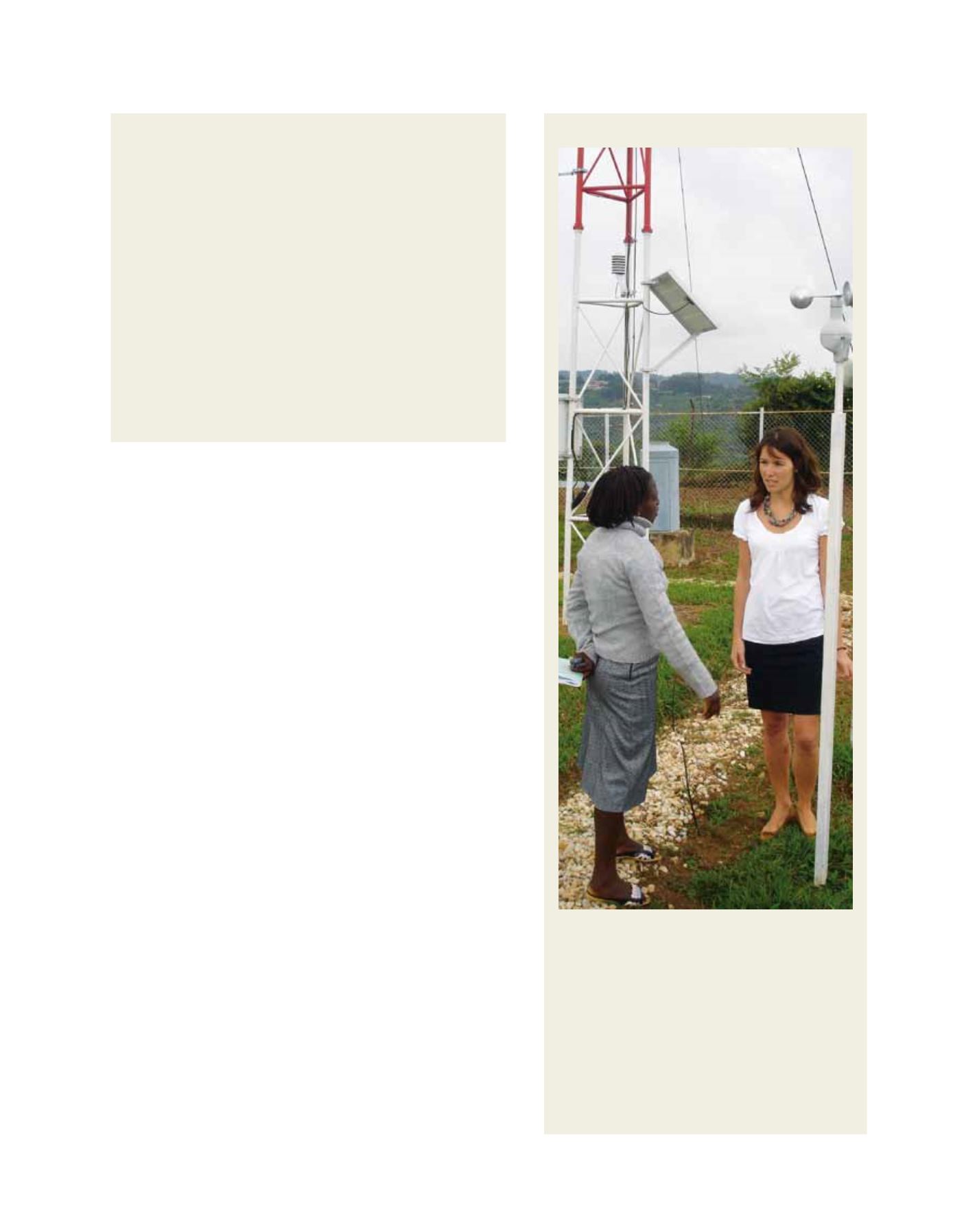

[
] 253
C
apacity
D
evelopment
and intense rainfall. During the monsoon season, all four models
projected an increase in the percentage of days with temperatures
above 35 °C over the entire Maharashtra region, with a large reduc-
tion in the percentage of days recording less than 25 °C.
Looking at three sub-regions of western, eastern and central
Maharashtra, there is a clear increase in the number of extremely warm
days consistent with an increase of approximately 1.5° C to 3° C.
The number of days with ‘high’ or ‘very high’ rainfall (greater
than 25 millimetres per day) is projected to increase over the
Maharashtra region across all four projections, while the number
of days with ‘low’ to ‘moderate’ rainfall is expected to reduce.
This suggests an increase in the region’s monsoon rainfall in a
warmer future climate, and is consistent with the other results.
An increase in the frequency of extremely high rainfall events will
further threaten Maharashtra with the risk of severe and wide-
spread floods.
In summary, all four projections for the Maharashtra region
suggest a warmer, wetter monsoon season with more frequent days
of extremely high temperatures and intense rainfall events lasting
longer into August.
Future uses
The climate projections generated by the Met Office will be used
by TERI to provide impact assessments for various sectors, such as
water (availability and affects of more rain in the monsoon season),
agriculture (millet and sugarcane) and health (heat stress, malaria).
As also seen in Bangladesh and Singapore, the high-resolution
regional climate model implemented for this region can easily be
employed in any part of the world to provide regional climate change
information for impact assessments to inform climate policymaking.
Currently, efforts are underway at the Met Office to develop
the next generation of climate models that will take into account
various Earth system elements to provide integrated impact assess-
ments (as opposed to one-way or offline assessments).
The next version of the regional climate model will be able to
provide climate change information at a resolution of around 10
km. Such information is highly valuable for city level adaptation
planning for cities like Mumbai.
Image: Met Office (UK)
Singapore: enhancing national climate science capability
South East Asia is highly vulnerable to climate variability and climate
change – for example through flooding from tropical thunderstorms and
storm surges, coastal land loss from sea level rise, heat stress, and the
resurgence of diseases such as dengue.
In May 2011, the UK Met Office and the Meteorological Service
Singapore (MSS) started a three-year programme to enhance Singapore’s
climate science capability involving an exchange of scientists to and
from the UK. Met Office scientists are using their expertise to help MSS
and other national weather services across South East Asia analyse
the wealth of extreme weather data accumulated over the years. Led by
MSS, this project will establish a database that will be used to determine
the level of risk each country faces and assess the reliability of climate
models in the region.
An additional aim of the Met Office-MSS partnership is to produce
joint scientific papers relevant to the upcoming Intergovernmental Panel
on Climate Change (IPCC) Assessment Report in 2013/4, covering
fundamental issues of climate change and its impacts on the South
East Asia region. By integrating MSS into IPCC processes in this way,
the Met Office is not only helping to enhance the scientific capability of
Singapore but strengthening IPCC’s process with a broader and more
comprehensive evidence base.
Consulting on observations network in Rwanda
Although the Met Office’s work in Rwanda focuses on
rebuilding the national meteorological service following
war, it further highlights the importance of a high
quality weather service for strengthening the economy
– particularly agriculture.
A Met Office consultant has just spent a year in
Rwanda working with the Rwanda Meteorological
Service through the World Meteorological
Organization’s Voluntary Cooperation Programme:
• Developing a new severe weather warning system
• Modernizing observational data processes
• Modernizing national TV weather bulletins
• Producing forecasts for radio and newspapers
• Refreshing the service’s website.
















